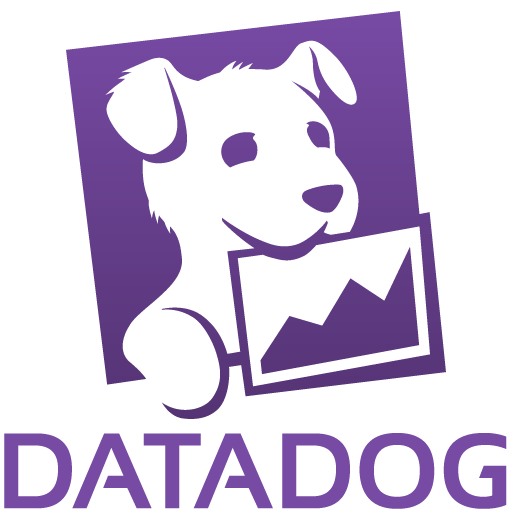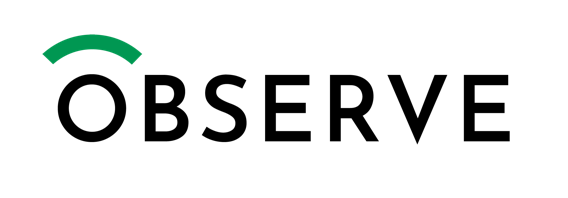
Overview
Datadog is a SaaS-based unified observability and security platform providing full visibility into the health and performance of each layer of your environment at a glance. Datadog allows you to customize this insight to your stack by collecting and correlating data from more than 600 vendor-backed technologies and APM libraries, all in a single pane of glass. Monitor your underlying infrastructure, supporting services, applications alongside security data in a single observability platform.
Prices are based on committed use per month over total term of the agreement (the Total Expected Use).
Highlights
- Get started in minutes from AWS Marketplace with our enhanced integration for account creation and setup. Turn-key integrations and easy-to-install agent to start monitoring all of your servers and resources in minutes.
- Quickly deploy modern monitoring and security in one powerful observability platform.
- Create actionable context to speed up, reduce costs, mitigate security threats and avoid downtime at any scale.
Details
Introducing multi-product solutions
You can now purchase comprehensive solutions tailored to use cases and industries.
Features and programs
Trust Center
Buyer guide

Financing for AWS Marketplace purchases
AWS PrivateLink
Quick Launch
Security credentials achieved
(2)


Pricing
Dimension | Description | Cost/month | Overage cost |
|---|---|---|---|
Infra Enterprise Hosts | Centralize your monitoring of systems and services (Per Host) | $27.00 | |
APM Hosts | Optimize end-to-end application performance (Per APM Host) | $36.00 | |
App Analytics | Analyze performance metrics (Per 1M Analyzed Spans / 15-day retention) | $2.04 | |
Custom Metrics | Monitor your own custom business metrics (Per 100 Custom Metrics) | $5.00 | |
Indexed Logs | Analyze and explore log data (Per 1M Log Events / 15-day retention) | $2.04 | |
Ingested Logs | Ingest all your logs (Per 1GB Ingested Logs) | $0.10 | |
Synthetics API Tests | Proactively monitor site availability (Per 10K test runs) | $6.00 | |
Synthetics Browser Tests | Easily monitor critical user journeys (Per 1K test runs) | $15.00 | |
Serverless Functions | Deprecated. Not available for new customers | $6.00 | |
Fargate Tasks | Monitor your Fargate Environment (Per Fargate Task) | $1.20 |
The following dimensions are not included in the contract terms, which will be charged based on your usage.
Dimension | Description | Cost/unit |
|---|---|---|
Custom dimension used for select private offers | Custom dimension used for select private offers | $1.00 |
consumption_unit | Additional Datadog Consumption Units | $0.01 |
Vendor refund policy
Custom pricing options
How can we make this page better?
Legal
Vendor terms and conditions
Content disclaimer
Delivery details
Software as a Service (SaaS)
SaaS delivers cloud-based software applications directly to customers over the internet. You can access these applications through a subscription model. You will pay recurring monthly usage fees through your AWS bill, while AWS handles deployment and infrastructure management, ensuring scalability, reliability, and seamless integration with other AWS services.
Resources
Support
Vendor support
Contact our knowledgable Support Engineers via email, live chat, or in-app messages
AWS infrastructure support
AWS Support is a one-on-one, fast-response support channel that is staffed 24x7x365 with experienced and technical support engineers. The service helps customers of all sizes and technical abilities to successfully utilize the products and features provided by Amazon Web Services.



FedRAMP
GDPR
HIPAA
ISO/IEC 27001
PCI DSS
SOC 2 Type 2
Standard contract
Customer reviews
Unified monitoring has streamlined global reporting and standardized alerts across teams
What is our primary use case?
My main use case for Datadog is that we offer the application performance management service within PwC as a global team.
A specific example of how my team uses Datadog for performance management is that my team does not directly use Datadog for performance management; however, we work with approximately 300 teams that use it daily for monitoring their apps. One of the most used cases is to observe when services are up and down and if services are not degraded.
We use most of every product within Datadog across the 300 customers that we have internally.
How has it helped my organization?
Datadog has positively impacted my organization because before Datadog, we had multiple APM tools and monitoring tools, which fragmented the service. The reason was that some tools offered benefits to certain teams, while other tools offered different benefits to other teams. With Datadog, we managed to get everyone on board into a single place and a single tool, providing teams with one spot where they can check everything related to monitoring, and enabling management and leadership to have an overview of all tools working together.
I measured the impact of bringing everything into one place through observation, and I can confirm that efficiency in reporting improved dramatically and it became much easier to observe changes. Standardization was a tremendous win for us. Having a set of standard alerts and monitoring in place allowed us to speed up onboarding for every app. Once the resources are in Datadog, the system provides alerting out of the box. Additionally, cost has decreased dramatically.
What is most valuable?
Datadog's best features include very high demand for logs management for alerting on indexed logs and a shift towards Flex Logs for storage and long-term storage. Most recently, BitsAI and the LLM part within Datadog has been in focus for us.
Flex Logs has helped my teams because we are migrating from other services to have a unique place to store all the logs, the non-security logs, and the app logs. This has benefited those teams because they also benefit from other services within Datadog such as APM or other monitoring solutions. By bringing the logs into Datadog, they now have a single place where they can correlate everything.
The LLM integration within Datadog has helped my teams because LLM usage is at the beginning stage right now, and people are very excited. We have all these AI and LLM-based tools, and having the option of monitoring them is a great benefit for us. However, we are in the exploratory phase of this process and have just begun.
BitsAI is very interesting; we have done some testing and we are going to promote it and use it in our production environment. This is a very exciting new tool for us.
What needs improvement?
Datadog can be improved because sometimes it seems it has not been developed for enterprises. We work with over 300 customers, with each customer having multiple instances or apps within Datadog. We are facing difficulties in controlling access, in privacy settings, and splitting usage and costs for these customers.
We want to be able to customize the cost part, and we would appreciate more granular access control.
For how long have I used the solution?
I have been using Datadog for four or five years.
What do I think about the stability of the solution?
Datadog is stable.
What do I think about the scalability of the solution?
We have never had an issue with Datadog's scalability.
How are customer service and support?
Datadog's customer support is good; it could be improved in terms of communication, but it is adequate.
How would you rate customer service and support?
Which solution did I use previously and why did I switch?
How was the initial setup?
My experience with pricing, setup cost, and licensing is good; nothing out of the ordinary.
Which other solutions did I evaluate?
Before choosing Datadog, the biggest contender we evaluated was AppDynamics.
What other advice do I have?
My advice for others looking into using Datadog is to test it out and see if it works for you. Try to become accustomed to the tagging part of things, and go through each product to understand what each product within Datadog is offering. I would rate this product an eight out of ten.
Effortless Monitoring Across Platforms with Datadog
It is easy to use and supports different kinds of platforms like AWS, Azure, and GCP. Installation is very easy. Datadog provides all the required documents for integrating the agent. We can use the predefined dashboard templates many times, which is a lifesaver if we have repeated monitoring services.
Large-scale monitoring services and tracking are very easy, and the UI is clean, and we can find every service and access the running process via UI as well.
Cost is somewhat high; we have to pay even we utilize the resources or not.
And the main con is the customer support; they only deal via email, and we have to dump the log data into their storage. They first analyse the logs and come back to us; it will typically take 24-36 hours, which has an impact on the clients. Also, they only come on a call on production issues.
Unmatched Observability and AI Insights, Lightning-Fast Setup
The correlation between logs → metrics → alerts is incredibly powerful, and the AI-based anomaly detection has helped us reduce blind spots in our observability stack.
As a Product Manager, Datadog enables me to set clear SLOs, understand system behavior end-to-end, and reduce MTTD/MTTR significantly. It gives us a proactive observability mindset powered by intelligent metrics and real-time insights, helping us deliver a more stable and predictable platform for users.